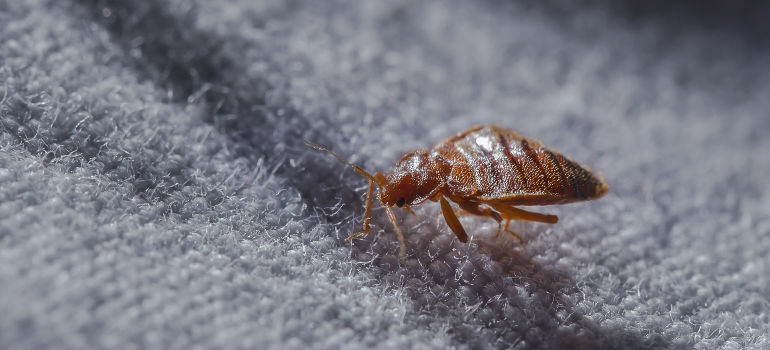
Image source: Akos Nagy/shutterstock.com
Bed bug infestations can be stressful and overwhelming. Identifying, treating, and preventing the spread of these resilient bed insects can be challenging, leaving many homeowners with countless questions. Recognising early signs of infestation and identifying the most effective treatment options are some of the challenges people face when dealing with bed bugs.
We will explore the most common questions individuals have regarding bed bug infestations, and provide a clear and practical answers to be able to control bed bugs.
Here are some of the most common questions to ask a bed bug exterminator. You can prevent bed bugs in your home by following these tips from London bed bug experts.
Table of Contents
What are bed bugs?
Bed bugs are small, blood-sucking insects that infest properties and people’s beds and furniture. A bed bug is a small parasitic insect that feeds exclusively on humans and warm-blooded animals. They usually hide during the day, and by night they come out to feed.
Commonly found in mattresses, bed frames, and upholstered furniture, bed bugs are highly adaptable and can hide in small cracks and crevices.
What do bed bugs look like?
Adult bed bugs are brown, oval, flat and no bigger than 5 mm. They have six legs and are able to move quite fast over your bedsheets. Bed bug nymphs are translucent and are no bigger than 1 mm. Mind you, there are some bugs similar to bed bugs, but aren’t. It’s easy to get mixed up, so check our post on the topic to become more familiar.
Are bed bug bites dangerous?
While they do not transmit diseases, their bites can cause itching, skin irritation, and allergic reactions, making infestations both a nuisance and a health concern. Additionally, excessive scratching of bites can lead to secondary infections. While not life-threatening, bed bug bites can cause significant physical and emotional distress, especially during prolonged infestations.
How to treat bed bug bites at home?
How to terminate bed bugs? Treating bed bug bites at home involves soothing the itching and preventing infection:
- Clean the area: Wash the bed bug bites with mild soap and warm water to reduce irritation and lower the risk of infection.
- Apply a cold compress: Use a clean cloth with ice or a cold pack to reduce swelling and numb itching.
- Use anti-itch creams: Apply over-the-counter hydrocortisone cream or calamine lotion to soothe the skin and reduce inflammation.
- Take antihistamines: Oral antihistamines can help alleviate itching and any allergic reactions.
- Avoid scratching: Scratching can cause the skin to break, leading to infections.
- Moisturise the skin: Use a gentle, fragrance-free moisturiser to prevent dryness around the affected area.
If the reaction worsens or signs of infection appear, such as pus, redness, or fever, consult a doctor.
What temperature kills bed bugs?
When it comes to high temperatures, bed bugs start to die at 100°F (37.7 C). At 113°F (45 C), bed bugs will die in 90 minutes, and at 118°F (47.77), they will die in under 20 minutes.
As for low temperatures, -13°F (-25 C) can kill adult bed bugs in about two days. One of the most effective ways to kill these critters is to use a heating unit to rapidly heat beds and floors. The heat will suffocate and kill them.
How to dispose of bed bugs?
Infested items should be sealed in heavy-duty plastic bags or containers. To prevent bed bugs from escaping, seal any gaps in plastic sheeting with duct tape.
For items like furniture, or clothing that cannot be treated, use heavy-duty plastic bags to seal them. The best way to protect larger items, such as mattresses, is to completely wrap them in plastic sheeting or use mattress bags. This prevents bed bugs from escaping and spreading to other areas. Make sure to seal the bags tightly with tape to ensure they remain secure during disposal.
If disposing of furniture, disassemble it to make it easier to manage and safely seal. This also makes it harder for bed bugs to hide during the removal process. Avoid placing bed bug-infested items in recycling bins or public trash cans to minimise contamination.
Do bed bugs hibernate?
Bed bugs do not hibernate in the traditional sense, but do enter a state of dormancy under certain conditions. During colder weather or when a food source (blood) is unavailable, bed bugs can become inactive to save energy. In this period, their metabolism slows down and they can survive for months without food.
They become active again once conditions improve, such as rising temperatures or the availability of a host. Dormancy is a temporary and survival-based state, rather than true hibernation. Bed bugs and their eggs can be killed by exposure to extreme temperatures.
What temperature kills bed bugs?
Cold treatment: Bed bugs can also be killed by freezing at temperatures below -18°C (0°F). Items must remain in freezing conditions for at least 4 days to ensure effectiveness.
Heat treatment: Temperatures of 49°C (120°F) or higher are lethal to bed bugs. Professional heat treatments typically raise room temperatures to 50–60°C (122–140°F) to ensure all stages of the bed bugs, including eggs, are eliminated.
How did I get bed bugs in the first place?
Where do bed bugs come from? Bed bugs usually get into people’s homes by attaching themselves to clothing or luggage. Most often, an infestation occurs if you bring home second-hand furniture or mattresses. Bed bugs can also become uninvited guests once you come back from long travels.
The pests are excellent hitchhikers and can travel from one location to another unnoticed. Once inside a home, they hide in cracks and crevices around beds, furniture, and walls, where they can remain undetected for long periods, waiting to feed.
How do I know if I have bed bugs?
Only a pest control professional can tell you with 100% certainty that you’re infested with a particular pest. But, the signs of bed bugs are easy to notice – if you wake up with a row or cluster of itchy bites over your skin, then your bed is infested.
It’s also possible to spot the nasty insects with the naked eye. They usually hide during the day, but it’s not uncommon for a stray adventurer to wander outside of the hiding place. It’s especially easy to see if your sheets are white.
Can bed bugs live in clothes?
Yes, bed bugs can live in clothes, although they generally prefer to stay close to their food source (i.e., humans) in areas like beds and furniture. Bed bugs are excellent at hiding and can crawl into the folds of clothing, especially if it’s left on the floor, on furniture, or in storage areas close to where they reside.
They can also hitch a ride on clothes, which is why they are often spread through luggage, personal belongings, or second-hand clothing. Once in your clothes, bed bugs can remain hidden for a while, and may emerge to feed when they sense a nearby host.
To prevent this, it’s important to inspect clothes, especially when returning from travel or purchasing second-hand items, and to wash and dry them on high heat to kill any bed bugs or eggs.
How can I prevent a bed bug infestation?
Rule number one is to never bring home second-hand furniture, mattresses or bed sheets. The other most important precaution is to protect yourself during your travels. Never place your luggage on the bed of your temporary place of stay, and always inspect your bags.
Can bed bugs fly or jump?
No, bed bugs cannot fly or jump. Bed bugs are wingless and lack the ability to leap like fleas. Instead, they rely on crawling to move from place to place. They can travel across floors, walls, and furniture, but they do so by walking.
While they can’t fly or jump, bed bugs are excellent hitchhikers. They can easily spread to new areas by attaching to luggage, clothing, or furniture, and can be carried from one location to another unnoticed. This is one of the reasons why they are so difficult to contain and why infestations can spread quickly.
Do bed bugs only live in my bed?
No, bed bugs do not only live in your bed. While they are often found in or around sleeping areas due to their need for a blood meal from humans, they can hide in many other places throughout your home. Bed bugs can infest:
- Mattresses and box springs: They are commonly found in the seams, folds, and cracks.
- Bed frames and headboards: These provide ideal hiding spots.
- Upholstered furniture: Sofas, armchairs, and recliners are common places for bed bugs to hide.
- Cracks and crevices in walls and floors: They can find shelter in tiny gaps, behind baseboards, and under flooring.
- Clothing and luggage: Bed bugs can hitch a ride on clothes, bags, or luggage, travelling from place to place.
- Curtains and fabrics: Any fabric in close proximity to your bed or seating areas can harbour bed bugs.
Bed bugs are opportunistic pests, and they will move to wherever they can find a warm, dark hiding place close to their food source (you). They often spread throughout the home, infesting multiple areas, which is why it’s important to inspect and treat all potential hiding spots when dealing with an infestation.
If I keep my home clean, will that prevent bed bugs?
Keeping your home clean can help reduce the likelihood of a bed bug infestation, but it is not a guaranteed prevention method. Bed bugs are not attracted to dirt or poor hygiene; they are simply seeking a blood meal, usually from humans or animals. They can enter your home through luggage, second-hand furniture, or even on clothing.
However, maintaining cleanliness can make it easier to spot signs of bed bugs early, such as droppings, shed skins, or bite marks. Regularly vacuuming, inspecting furniture, and washing bedding can help minimise hiding spots and make it easier to detect and address an infestation before it becomes severe.
To effectively prevent bed bugs, you should also take additional steps such as using bed bug-proof mattress covers, checking for infestations in hotel rooms when travelling, and being cautious with second-hand items.
Bed bugs and pets
Pets are known to carry bed bugs inside people’s homes. Since cats and dogs are mammals, just like humans, they can provide the bed bugs with a good warm-blooded meal. However, bed bugs cannot live on pets, the way fleas can. They also cannot attach themselves or their eggs to animal fur.
So, if you’re worried that your pet might bring bed bugs inside, quick grooming in the backyard would be enough.
How can I avoid bed bugs when travelling?
The best way to protect yourself from bed bugs is to make an inspection of the bed in the hotel you are staying in. Check the headboard, check the sheets and pillows for spots. Look around the bed and around the bedside tables and drawers. If there’s nothing suspicious, you can rest easy.
Check also travel-safe bed bug prevention: How to Get Rid of Bed Bugs in Luggage
What do I do, if I suspect I brought home bed bugs?
Open your luggage on the floor, where you will be able to see bed bugs (light coloured tiles for example). Don’t unpack on a carpet. Launder everything at 90 degrees.
Check also the legal responsibilities of landlords regarding bed bug infestations: Responsibility for pest control when renting in the UK.
What do I do when I see bed bugs?
First, there are several insects that resemble bed bugs, you would need a professional to identify them. It’s not a good idea to grab the insecticide, you might only end up endangering your health.
If you’re asking a professional to come over and take a look at the infested property, you better give them information about everything you have done to battle the pests. Keep notes where you explain how long you’ve been infested, how many you have seen, etc.
What should I never do when dealing with bed bugs?
There are many “natural” ways of dealing with bed bugs posted online, such as using petroleum jelly or thyme oil. None of them works.
The worst thing you can do is take the matter into your own hands and spray the bed with any kind of insecticide. That’s a health hazard. Also, it won’t work because bed bug treatment is very specific, and the product you need is hard to find. Also, once you give up and call professionals, they will use an insecticide product on your bed again.
And, if you think changing the mattress with a new one will get rid of the problem, it won’t. The new mattress will get infested all over again.
How does a pest control company treat the bed bug infestation?
First, the bed bug control expert will inspect your bed and the rest of your property to get a grasp of the severity of the infestation.
Next, the treatment is carried out in two visits, separated by two weeks. We can apply a powerful insecticide or a bed bug heat treatment with 100% efficiency. On the second visit, we will apply a product for a residual effect.
Finally, the technician will present you with a report of the job done and offer advice for future prevention of a new infestation.
How long should I stay out after bedbug chemical treatment?
After a chemical treatment for bed bugs, it is generally recommended to stay out of the treated area for at least 4 to 6 hours to allow the pesticides to settle and dry. This time frame can vary depending on the type of chemicals used and the specific instructions provided by the pest control professional.
In some cases, you may be advised to stay out of the treated area for a full 24 hours or more, especially if stronger chemicals or fumigation methods are used. It’s crucial to follow the bed bug exterminator recommendations for safety.
After returning, you should avoid direct contact with treated surfaces until they are completely dry. Make sure to ventilate the area well to help disperse any lingering fumes.
Check also: False Alarm: Bugs that Look like Bed Bugs
How I know the bed bug treatment was successful?
A treatment for bed bugs is successful if no bed bugs or bites are seen afterward. Also look for dead bed bugs, which will appear shriveled and curled. Obviously, there will no longer be any living bed bugs. The sheets and mattress should no longer have signs from bed bugs, fresh casings, or fecal matter or blood spots.

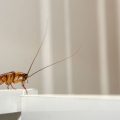



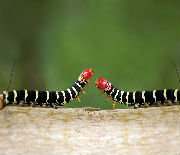
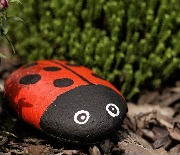
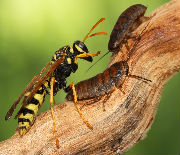
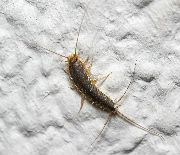
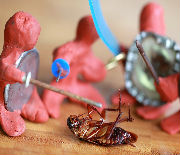
The best and the only way to prevent the bed bugs is to keep the bed and cot clean. Also regular washing of the bedsheets and pillow covers will help. If the condition is serious then it is better to call the pest control services company.